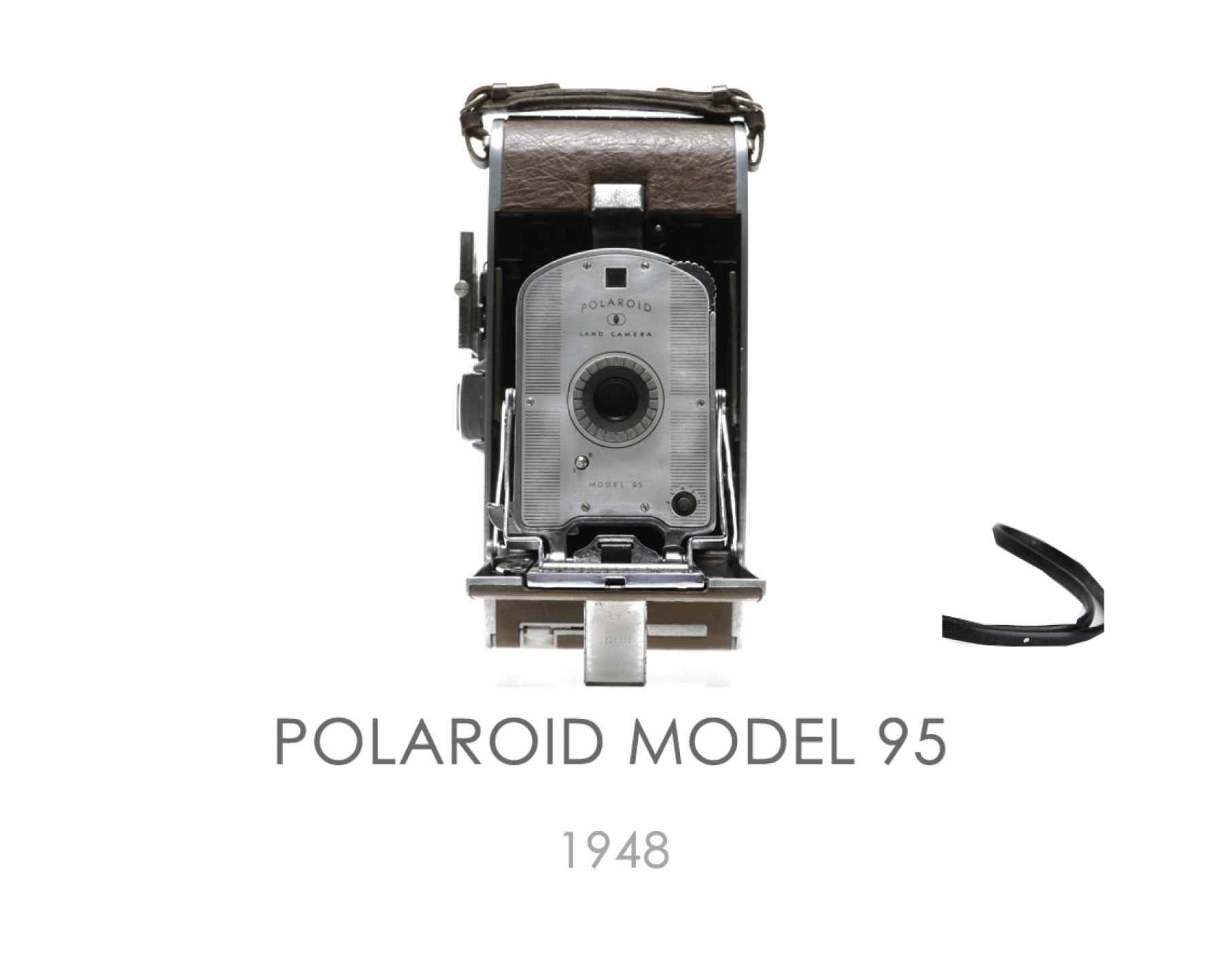Estimated Production: 800,000 - (900,000)
- Lens: 135mm, f/11, 3-element glass.
- Shutter: 4 speed everset rotary-leaf design; 1/8 - 1/60, plus Bulb.
- Flash: M-sync via ASA-bayonet post connector.
- Exposure set by Light Value scale. ("Polaroid numbers")
- Folding viewfinder, with simple "ball-and-mast" parallax compensation device.
- Scale focus, with distance set by arcuate lever.
- Has two tripod sockets and cable-release socket.
- Polished steel body with brown fake-leather covering. Some examples have chrome plated trim.
IMPORTANT FIRSTS: First Polaroid Land camera, first commercially successful self-developing camera system.
NOTE 1: Earlier examples of this camera was made for Polaroid by Samson United of Rochester, with the lens made by Wollensak (?) (Later models have bodies and lenses made by Polaroid themselves-- this was a stopgap solution until Polaroid could set up their own manufacturing line). A visitor reports that some Model 95's may have also been produced in a Timex plant in Atlanta.
NOTE 2: Unlike later Polaroid rollfilm camera models, the 95 has a pair of clips in the film chamber to hold the "negative" roll in place.
NOTE 3: I wonder if the metal finish (and perhaps the covering adhesive) used on this camera may be different from the later rollfilm models, as Model 95 cameras seem to be significantly more likely than other Polaroid rollfilm cameras to exhibit pitting or corrosion of exposed metal parts and/or bubbled or missing covering pieces. However, that's merely my own observation; your mileage may vary, so to speak.
COLLECTOR'S NOTES: Certain details of this camera underwent minor changes during the overall production run. The most well-known of these is the fact that most of them (the first 700,000 or so that were produced) have a flexible spring post on the front standard (for viewfinder centering and parallax correction), whereas the later production models (the remaining 1 or 2 hundred thousand or so) have a rigid post instead. Also, the front nameplate was changed a few times as well. The first 100,000 or so 95's have an engraved nameplate with black ink used to fill in the engraved areas. The nameplate on the later production models is silkscreened (in black ink) instead. In addition, the first 300,000 or so have the word "FLASH" (engraved or silkscreened) around the ASA flash contact on the front, but this label does not appear on later-production 95's.
One interesting thing I have noticed is that the number (and selection) of patents identified inside the back of the camera changed several times during the production life of this camera. [Fun Do-It-Yourself Research Project: Get an old Polaroid camera. Now go to the United States Patent Office web site (www.uspto.gov). Look up the various patent numbers listed inside the camera. Fun eh? Notice that many of the design concepts described/illustrated in the patent applications for some of the early Polaroid camera patents are surprisingly different from the products which actually got made/sold.]
Incidently, despite the historic significance of this camera, there is very little demand for this camera in the USA from a collector perspective. In part, this is probably due to its relative commonness-- there were close to a million Model 95's produced during its production life.
Source: http://www.landlist.ch/landlist/landdcam-roll.htm
